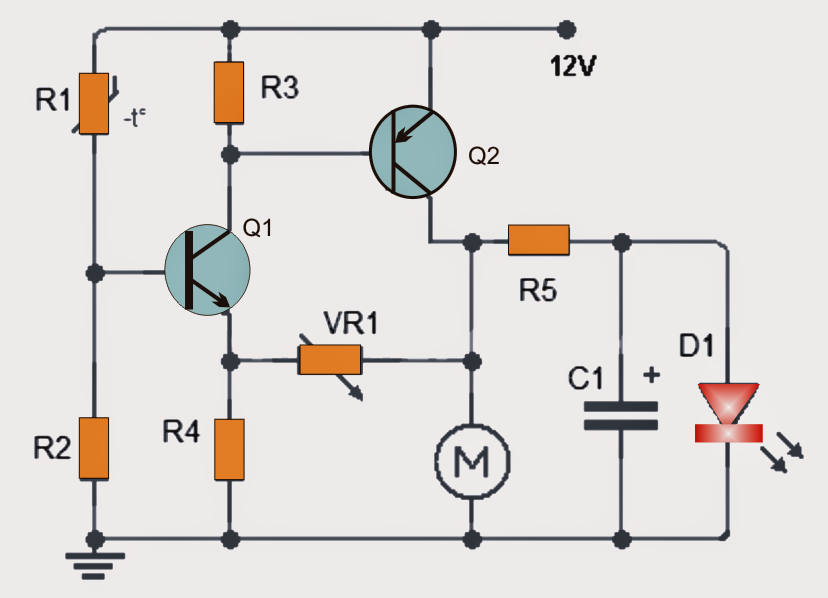This fan speed controller functions by sensing the temperature of the engine and is appropriately useful for the initiating. As the temperature raises so does the speed of the fan motor and vice versa.
Procedure of the offered temperature managed fan might be recognized given below:
The speed of the DC motor changes as the temperature boosts which can be transformed into a correspondingly rising voltage and utilized between its terminals.
To calculate temperature thermistor (R1) to be positioned as close as possible to the place where you would like him to feel temperature is utilized.
In the diagram, one can possibly notice that the thermistor (R1) and the resistor (R2) are being used to develop a voltage divider network. It is strongly recommended that the value of R2 is just about roughly one tenth of the value of R1.
As the temperature thermistor value diminishes it brings about the transistor Q1 to saturate more difficult correspondingly.
Considering that the collector of Q1 is hooked up to the base of Q2, the voltage at the base of Q2 also replies to the above and diminishes
The voltage diminishes at the base of Q2 which turns into saturated more difficult, producing the collector-emitter voltage (VCE) to lower thus increasing the voltage on the collector terminal of the motor.
The maximum speed of the motor is going to be somewhat lower than its calculated requirement.
To in addition, it might not be essentially required for accurate circuit operation, to understand the temperature to be able to control engine speed an LED can be utilized as presented in the diagram. This LED will correspondingly get brighter as the engine speed increases.

Parts List
R1: 15K thermistor
R2: 1.5K
R3: 1K
R4: 47
R5: 680
VR1: preset 22K
C1: 100uF/25V
Q1: 2N2712 (NPN) or equivalent
Q2: BD140 (PNP) or equivalent
D1 LED
M: Motor DC brushed or brushless
Note: The DC motor may be not the same as a computer motor. Ensure that the current rating of the motor is not going to surpass the rating of the transistor Q2. (maximum current 1.5 amps). It is strongly recommended not to go over 1 amp and use sink.
Leave a Reply